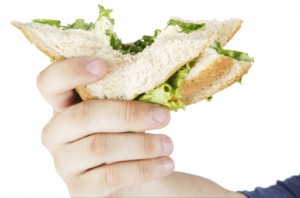The Atkins Diet Summarized
What is the Atkins Diet all about?
The diet was created by Dr. Robert Atkins as he worked to resolve his own overweight condition following medical school and graduate medical training. He started writing the popular series of books after successfully treating thousands of patients. The diet is designed around a low-carbohydrate concept. Based on the theory that refined carbohydrates are linked to obesity, and that only trans fat need to be avoided in comparison to saturated fats, the diet focuses on increasing protein content and restricting net carbs (carbs that have an effect on blood sugar) in order to switch the body's metabolism from burning glucose to burning fat.
Ketosis is the science behind the Atkins Diet. By reducing your carbohydrate intake to less than 40 grams a day, you will enter a bodily process called ketosis, a state in which your body burns fat as fuel. Ketosis affects insulin production which will prevent more fat from being formed. Atkins' plan suggests that once you enter ketosis and your body begins efficiently using the fat as fuel, your cravings for carbs will subside and you won't miss the foods you are doing without.
The Atkins diet is also based on the low-glycemic approach. The Glycemic Index, (or GI), ranks foods based on their effect on blood sugar in your body. For example, a potato is a very high-GI food and raises blood sugar very quickly after being consumed; berries have a low-GI rating, so they don't have an adverse effect on your blood sugar.
Phase One
Induction
First 14 days: You can start the Atkins diet at any stage, but if you want to see results fast start with this Induction phase – here you will jump start your weight loss as you cut back significantly on carb consumption.
During this phase you will slow down on carb consumption, so your body will rev into action and start burning fat. Each day 20 grams of Net Carbs (total carb grams less fiber grams) primarily from salad and other non-starchy vegetables are allowed.
Induction will help you to revitalize your life, beat your sugar carvings, look your best, and improve your overall health.
Acceptable Foods
These are the foods you may eat liberally during Induction: All fish, fowl, shellfish, meat, and eggs.
*Watch processed meats as they may be cured with added sugar and will contribute carbs. Try to avoid meat and fish products cured with nitrates, which are known carcinogens. Also beware of products that are not exclusively meat, fish or fowl and may contain added sugars and carbs.
You can consume three to four ounces daily of full-fat, firm, soft and semisoft aged cheese. The rule of thumb is to count 1 ounce of cheese as equivalent to 1 gram of carbohydrate. Note that cottage cheese, farmer’s cheese and other fresh cheeses are not permitted during Induction. No "diet" cheese, cheese spreads or whey cheeses are permitted.
You should eat 12-15 net carbs a day of vegetables and salad garnishes. If a vegetable, such as spinach or tomato, cooks down significantly, it must be measured raw so as not to underestimate its carb count. For salad dressing, use oil and vinegar or lemon juice and herbs and spices. Prepared salad dressings without added sugar and no more than two carbs per tablespoon serving are also fine.
All oils are allowed, the best being canola, walnut, soybean, grapeseed, sesame, sunflower and safflower oils. Butter and non-hydrogenated margarine is allowed.
All artificial sweeteners are allowed, the best being sucralose (marketed as Splenda™), saccharin, cyclamate and acesulfame-K.
A minimum of eight eight-ounce glasses of water each day is recommended. Additionally, you can have the following: clear broth, club soda, cream (limit to two to three tablespoons a day; note carbohydrate content), decaffeinated or regular coffee or tea (1-2 a day), diet soda made with sucralose (Splenda™), essence-flavored seltzer (must say "no calories"), herb tea (without barley or any fruit sugar added), and lemon juice or lime juice. *Note the carbohydrate content on all the above.
Please note: A carb counter and a complete list of Acceptable Foods can be found on www.Atkins.com
The Rules Of Induction
These rules must be followed precisely to achieve success. Eat either three regular-size meals a day or four or five smaller meals. Do not skip meals or go more than six waking hours without eating.
1. Eat liberally - combinations of fat and protein in the form of poultry, fish, shellfish, eggs and red meat, as well as pure, natural fat in the form of butter, mayonnaise, olive oil, safflower, sunflower and other vegetable oils (preferably expeller-pressed or cold-pressed).
2. Eat no more than 20 grams a day of carbohydrate, at least 12 – 15 grams of which must come in the form of salad greens and other vegetables.
3. Eat absolutely no fruit, bread, pasta, grains, starchy vegetables or dairy products other than cheese, cream or butter. Do not eat nuts or seeds in the first two weeks. Foods that combine protein and carbohydrates, such as chickpeas, kidney beans and other legumes, are not permitted at this time. If you feel you must eat bread or some other grain product, only high fiber low-carb products with 3 net carbs or less per serving are allowed, and you can eat only one serving a day. Be aware that even that amount may slow or stall your progress, and if that happens, drop the product immediately.
4. Eat nothing that isn't on the Acceptable Foods list - absolutely nothing.
5. Adjust the quantity you eat to suit your appetite, especially as it decreases. When you're hungry, eat the amount that makes you feel satisfied, but not stuffed. When you're not hungry, eat a small controlled carbohydrate snack to accompany your nutritional supplements.
6. Don't assume any food is low in carbohydrate—instead, read labels. Check the carb count (it's on every package) or use a carbohydrate gram counter. Be aware that the law allows manufacturers to round off if a product has fewer than 0.5 grams of any carbohydrate, so that will show up as zero. The only way to detect some fractional carbs is to look for them in the ingredients list, where they must be listed if they’re added to a product, regardless of the amount.
7. Eat out as often as you wish but be on guard for hidden carbs in gravies, sauces and dressings. Gravy is often made with flour or cornstarch, and sugar is sometimes an ingredient in salad dressing.
8. Use sucralose or saccharin as a sweetener. Be sure to count each packet of any of these as 1 gram of carbs, because of the fillers and bulking agents which are added.
9. Avoid too much coffee, tea and soft drinks that contain caffeine. Excessive caffeine has been shown to cause low blood sugar, which can make you crave sugar.
10. Drink at least eight 8-ounce glasses of water each day in addition to anything else you may drink, to hydrate your body, avoid constipation and flush out the by-products of burning fat.
11. If you are constipated, mix a tablespoon or more of psyllium husks in a cup or more of water and drink daily. Or mix ground flaxseed into a shake or sprinkle wheat bran on a salad or vegetables.
12. At a minimum, take a good daily multivitamin with minerals, including potassium, magnesium and calcium, but without iron.
What Induction Will Do For You
The name Induction signifies that its purpose is to induce weight loss by changing your body's chemistry so that you will achieve lipolysis and the secondary process of ketosis. This phase is not going to be your lifelong way of eating. It will last a minimum of 14 days, after which you should see significant results.
Phase Two
Ongoing Weight Loss
Here you will gradually add nutrient-rich carbs. This is the right phase for anyone who only wants to slowly shed a few pounds, or for those who simply want to adopt a healthy lifestyle. Here you will boost your body’s ability to burn fats, control your appetite and prepare yourself for permanent weight management.
The Induction limit of 20 Net Carbs a day is now increased up to 25 Net Carbs daily. Gradually the daily carb tally is increased, in 5-carb increments, until weight loss slows.
To be successful remember to:
- keep protein and fat as the mainstays of your nutritional regimen
- increase your daily carb intake by no more than 5 grams each week
- add new foods in the order listed in the carbohydrate ladder
- add one new food group at a time
- eat a food group no more than three times per week to start, then eat it daily
- stop new foods immediately if they provoke weight gain, the return of physical
- symptoms lost doing Induction or increased appetite or cravings
- continue doing OWL until you have five to 10 pounds left to lose
How To Follow Phase Two
Your daily threshold of carbohydrate consumption is your Critical Carbohydrate Level for Losing (CCLL). Stay below this number and you will experience ongoing weight loss. Go above it and your weight loss stalls. If you eat beyond your CCLL, you’ll make adjustments accordingly. Most people simply drop back down to the prior level of carb consumption.
Here's how you'll determine your CCLL: Each week, you'll incrementally increase the quantity of carbohydrate you eat beyond the salad and one cup serving of vegetables allowed during Induction. These increments should measure roughly 5 grams of daily carbohydrates, representing one "level."
Increase your daily carb intake from the 20 grams a day to 25 grams a day. As long as your weight loss continues steadily, you can go up another level—to 30 grams daily—the following week. Each week you'll go up another level, adding another 5 gram increment until eventually you'll reach a number at which you stop losing.
This phase is all about choice. As you add carbs, you can probably move beyond vegetables to other foods, such as nuts, berries and possibly grains. Keep to natural and unprocessed foods.
Approximate CCLL Range
High
15 grams of carbs per day
Average
15-40 grams of carbs per day
Low
40-60 grams of carbs per day
Regular exerciser*
60-90 or more grams of carbs per day
*In this context, a regular exerciser is someone who does vigorous exercise five days a week for at least 45 minutes.
Phase Three
Pre-Maintenance
In this phased you will focus on perfecting your eating habits for successful weight management. You will take your carb levels up a notch while still gradually losing weight.
During Phase Two, carbs were increased weekly in 5 gram increments. Each week in Pre-Maintenance you can bump your daily allotment up another 10 more grams of Net Carbs, as long as you continue to lose those last few pounds. Ideally you will increase carbs until you’re losing less than a pound a week.
If you introduce new foods slowly and increase your carb grams gradually, your Critical Carbohydrate Level for Losing (CCLL) should increase gradually. This new and higher CCLL will reflect the fact that you are now losing weight more slowly.
When you are at your goal weight, stay at that level for a month or so before you increase your daily carb consumption by another 10 grams to see if you can consume that level without gaining. Once you do begin to gain, drop back 10 grams and you should have established your Atkins Carbohydrate Equilibrium (ACE).
While it may take as long as three months to drop the last few pounds and clearly establish your ACE, this leisurely pace is critical to your ultimate success.
Rather than add carbohydrate foods in increments of 10 grams each week, another approach to Pre-Maintenance is to continue eating as you were at the end of OWL and to allow yourself a 20 gram carb treat two or three times a week. Add a piece of fruit or a starchy vegetable—a serving of brown rice or sweet potatoes, for example, or even a glass of wine or beer.
In this phase, as long as you are not skipping meals and are continuing to lose weight, you are controlling your blood sugar and burning fat, so your appetite should not be out of control.
As you advance toward Lifetime Maintenance, you should proceed slowly. It is not getting to your goal weight that is most important, but learning the eating plan that will prepare you for ongoing weight maintenance.
Phase Four
Lifetime Maintenance
Now is the time to commit to a sensible eating plan. Lifetime Maintenance is about making healthy habits a permanent way of life. Focus on your ACE and you’ll meet the challenge to always stay within 5 pounds of your goal weight, day by day, for the rest of your life.
Continue to select from a greater range of foods and consume more carbs than you did in the weight-loss phases. You can up your carb intake even higher if you are routinely exercising.
Try to weigh yourself at least once a week. Whenever you weigh over 5 pounds of your goal weight promise yourself that, within a week, you will begin the Induction phase and quickly switch to Ongoing Weight Loss until you reach your goal weight again. Do this and you will never have more than five pounds to lose.
Weight control is now a constant priority in your life.
For ongoing success, follow the rules of Lifetime Maintenance:
- Adhere to your ACE.
- Continue to eat natural, unprocessed, nutrient-dense carbohydrates.
- Exercise regularly.
- Continue to take nutritional supplements, modifying your regimen to meet your needs.
- Develop a strategy for dealing with temptation.
- Avoid boredom by regularly trying new recipes.
- Never let yourself get more than five pounds above your goal weight.
- Approximate ACE Range
High
25 to 40 grams of carbs per day
Average
40 to 60 grams of carbs per day
Low
60 to 90 grams of carbs per day
Regular exerciser*
90 or more grams of carbs per day
*In this context, a regular exerciser is someone who does vigorous exercise five days a week for at least 45 minutes.
You can view the complete article at http://astronutrition.com/blog/book/diets/atkins_diet
-
Find the Meal Delivery Diet That's Right for You: Comparing Jenny Craig, Medifast and NutriSystem
One of the more popular trends in dieting and weight loss in recent
-
Water, The Easiest Way to Lose Body Fat
by Ricardo d Argence Face it, we would all love to lose weight and imp
-
Best Ways to Lose Belly Fat - 7 Effective Tips To Help You Shed Inches Off Your Tummy With Ease
Excess body fat is usually stored around
-
Weight Loss Programs – Which One Is Right For You?
Mustering up the willpower to keep on a schedule weight loss program r
-
How To Drop a Pound Every Week
Following restrictive diets is an outdated practice that someti
-
Hypothyroidism Is Easy To Recognize When You Know The Symptoms
Signs and symptoms and indicators of main hypothyroidism are frequentl
- DON'T MISS
- Eat These Fat Burning Foods
- 8 Myths About Womens Fitness You Should Stop Believing Right Now
- Some Important Tips For A Successful Diet
- Plot Your Weight Loss Course
- Is Green Coffee Bean Extract Right For You?
- 8 Quick Weight Loss Tips- Quick Weight Loss Tips to Strip that Fa
- If You Are Considering Intriguing A Costa Rica Holiday, Youve Made A First-rate Choice.
- The Ultimate Teen Weight Loss Plan
- Burn Fat In 15 Minutes
- How Nutrisystem D Makes Losing Weight So Easy




